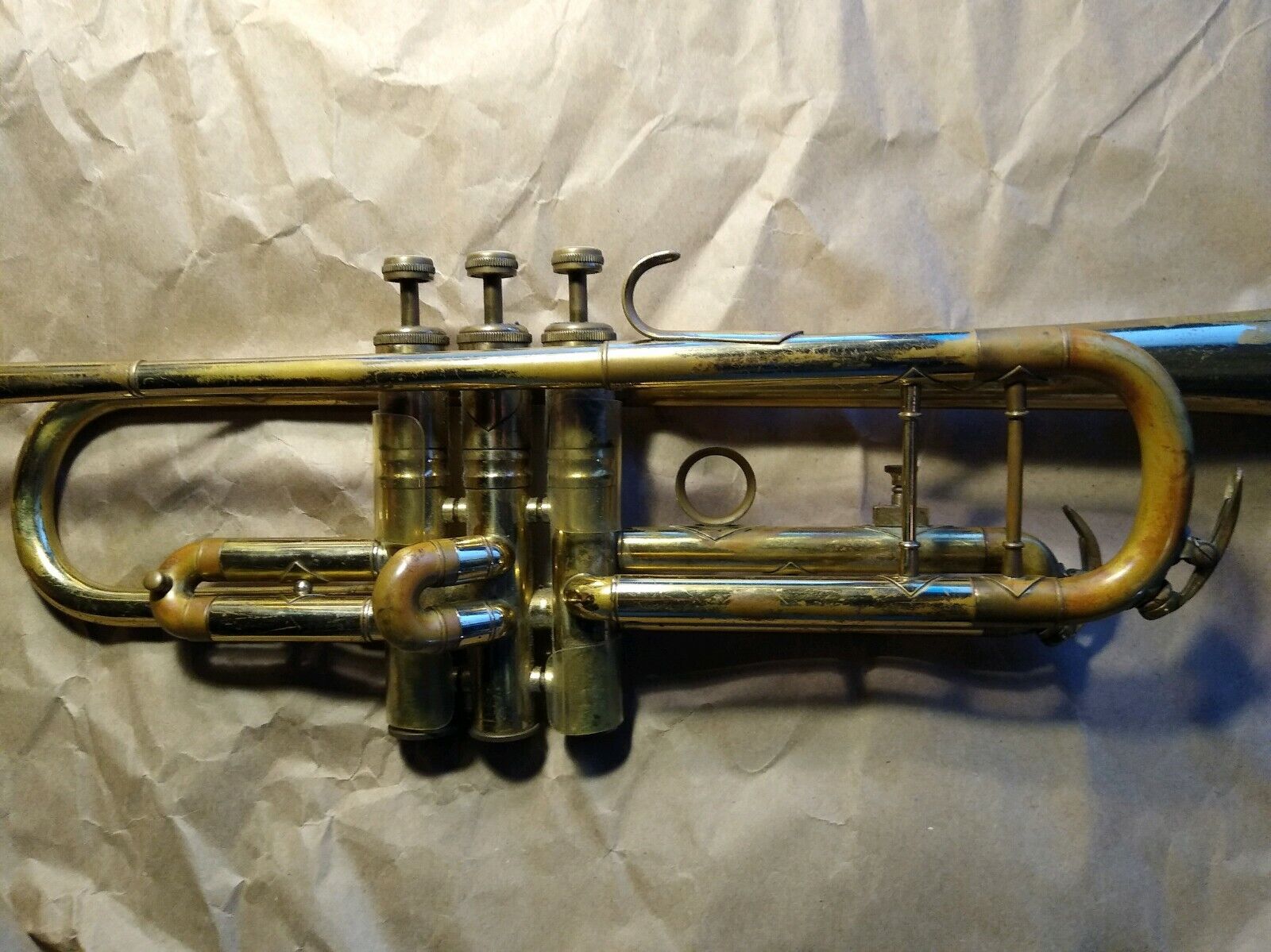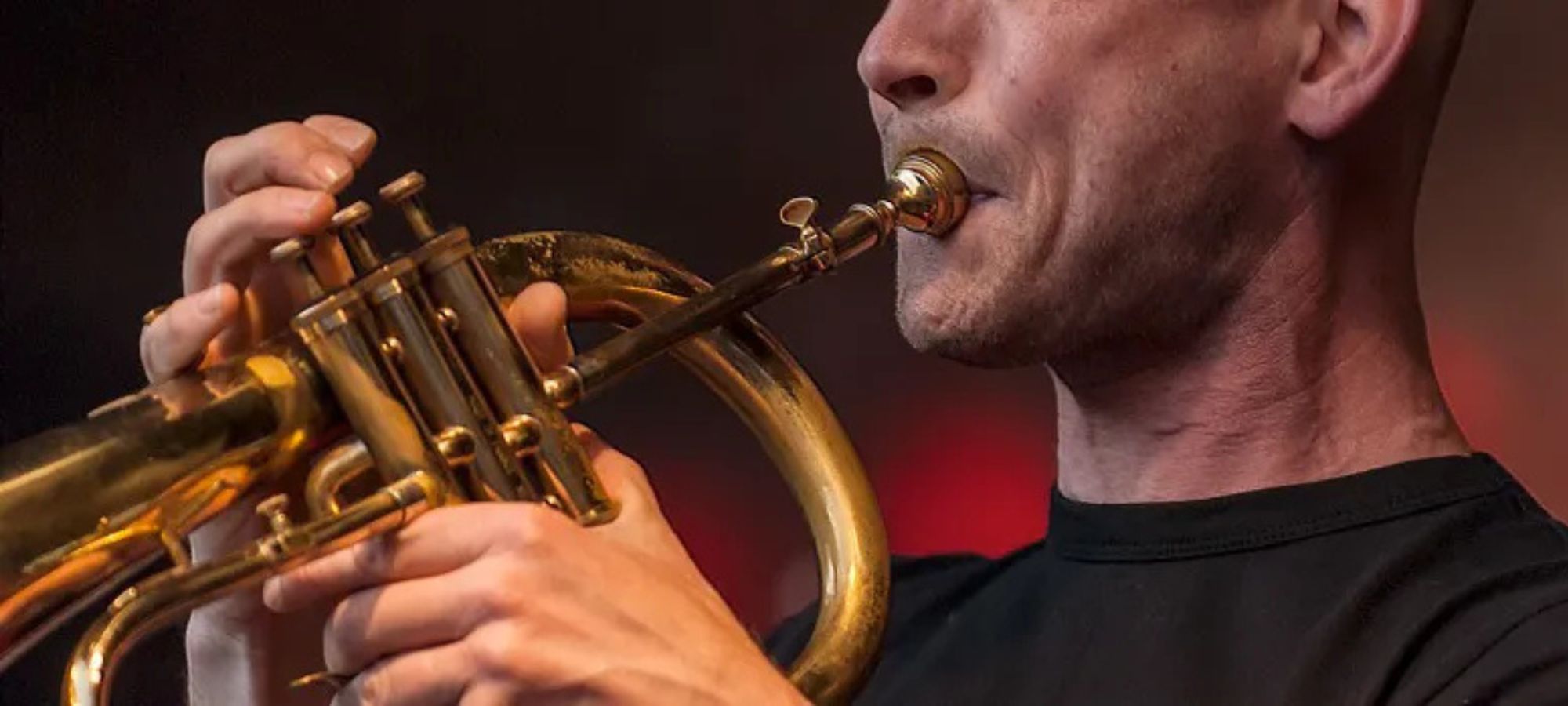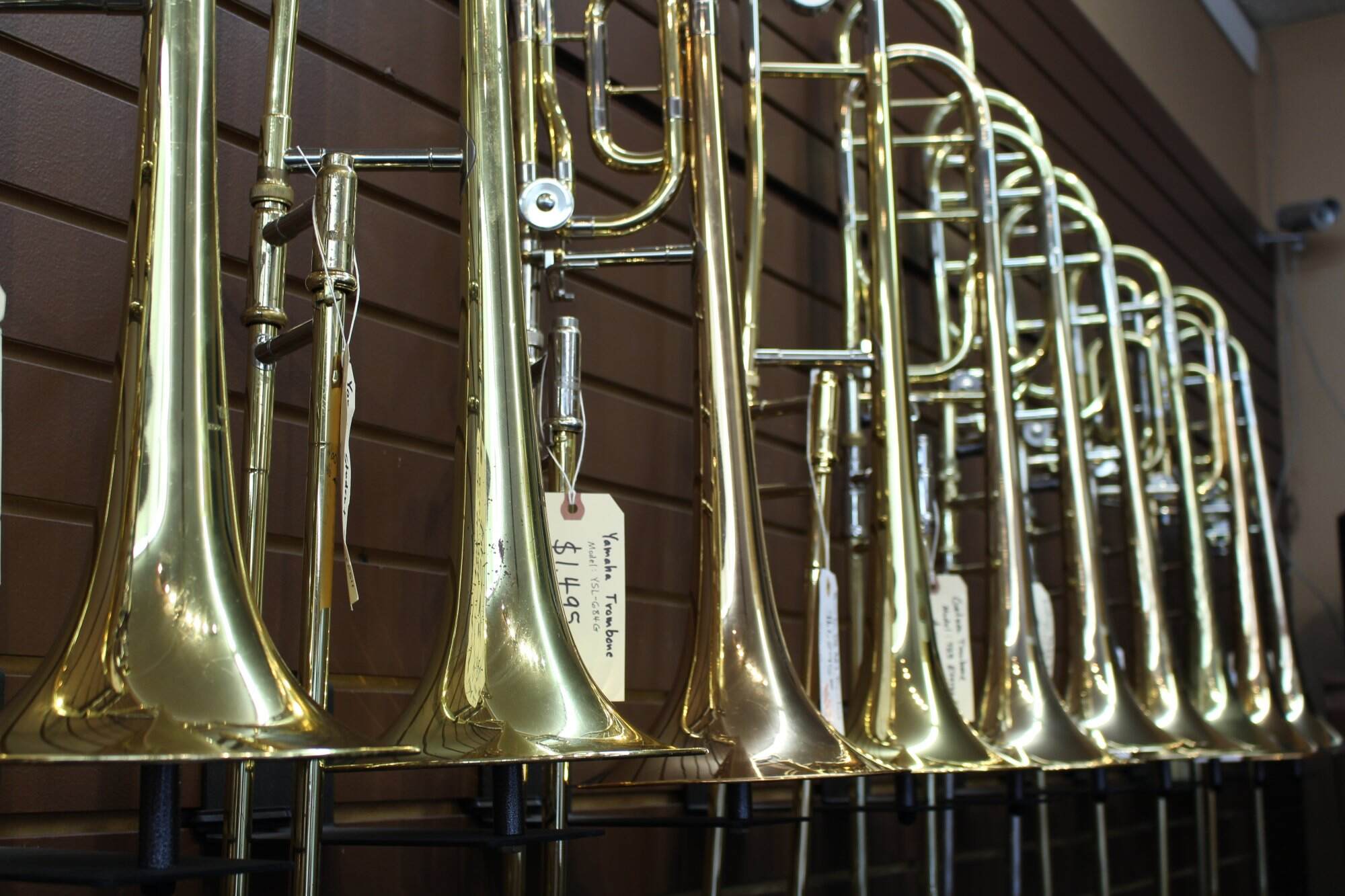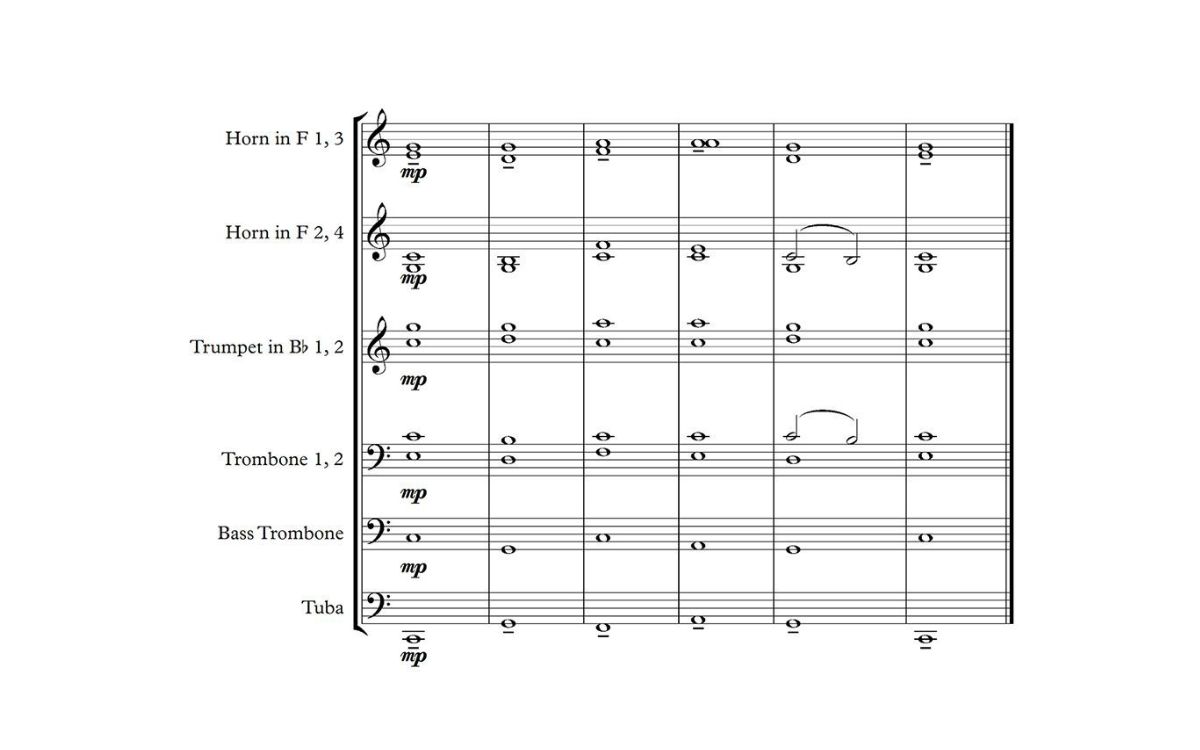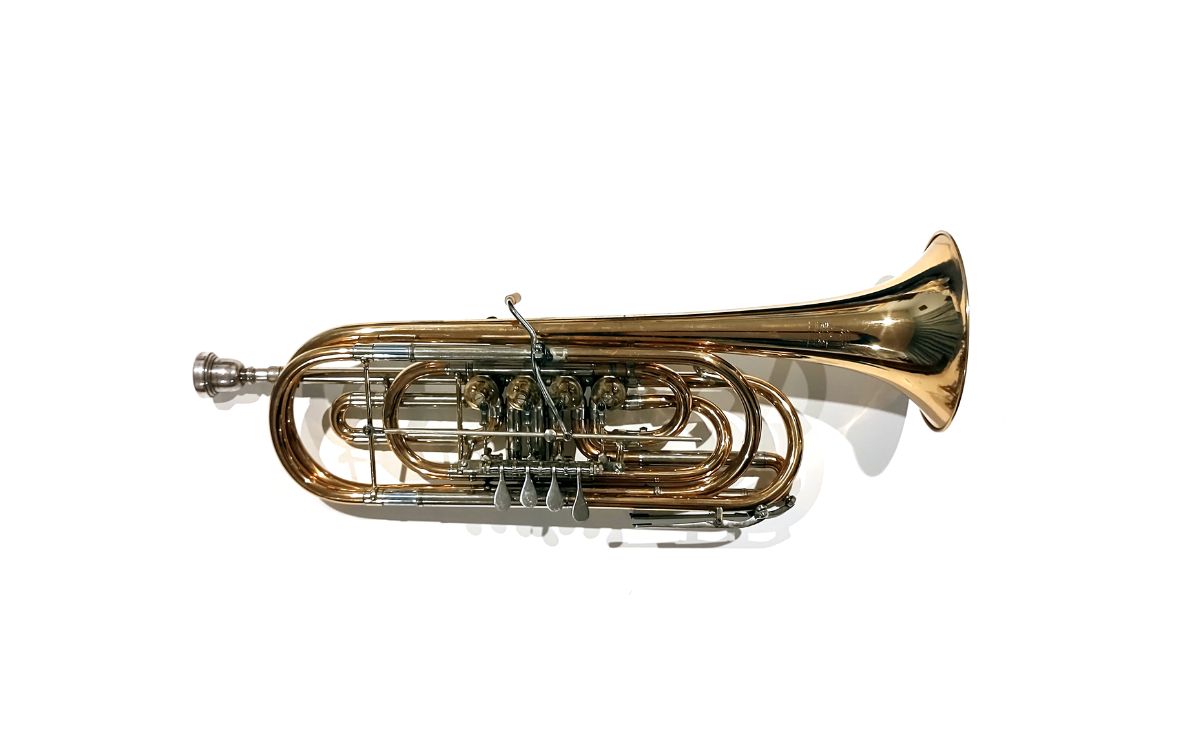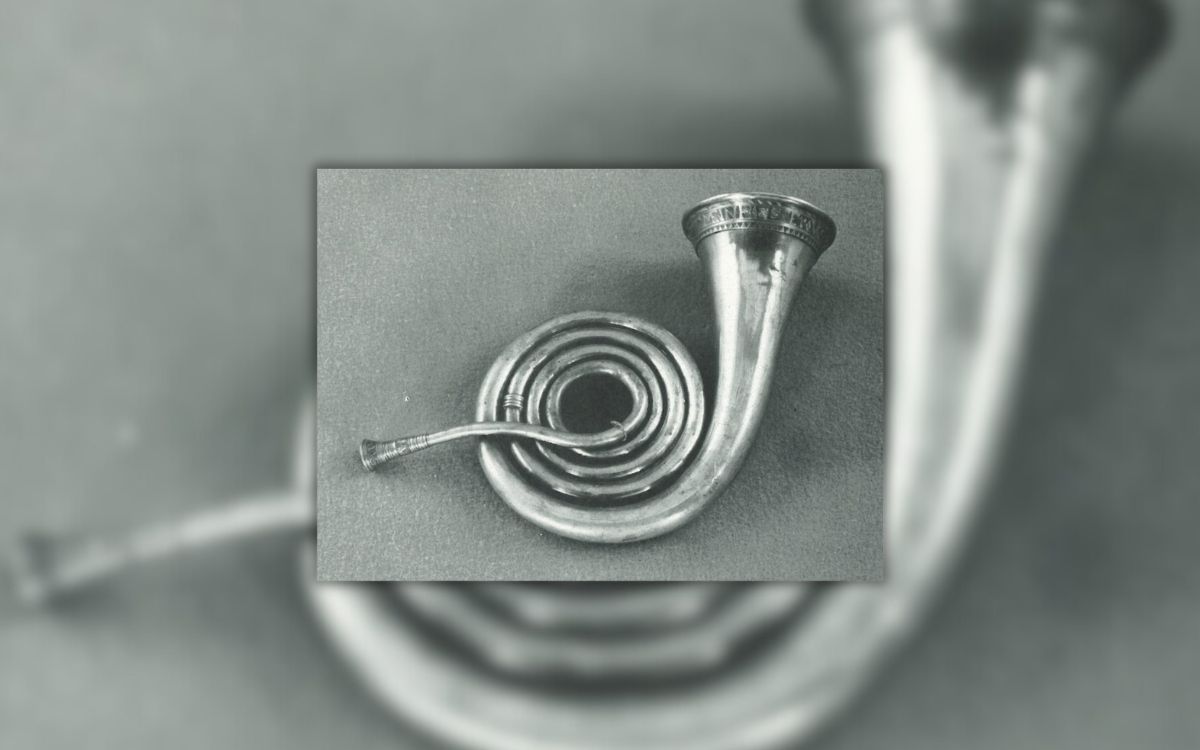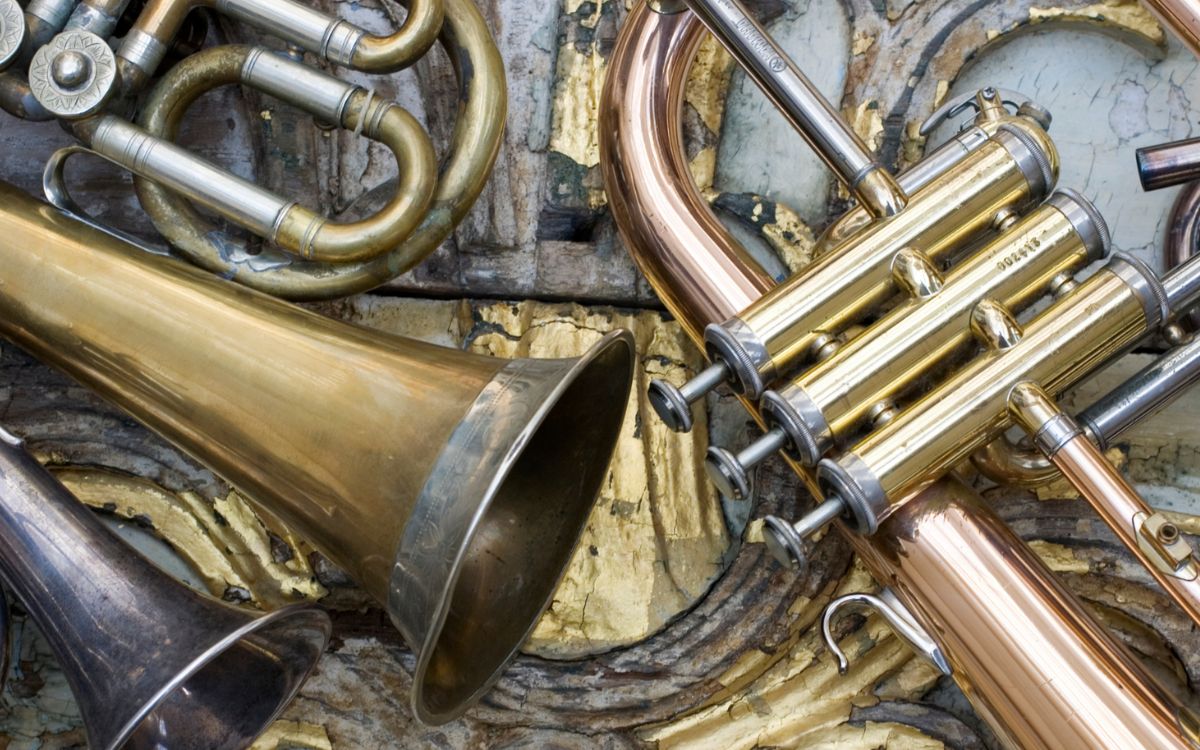Home>Instruments>Brass Instruments>What Is A Euphonium When It Comes To Brass Instruments
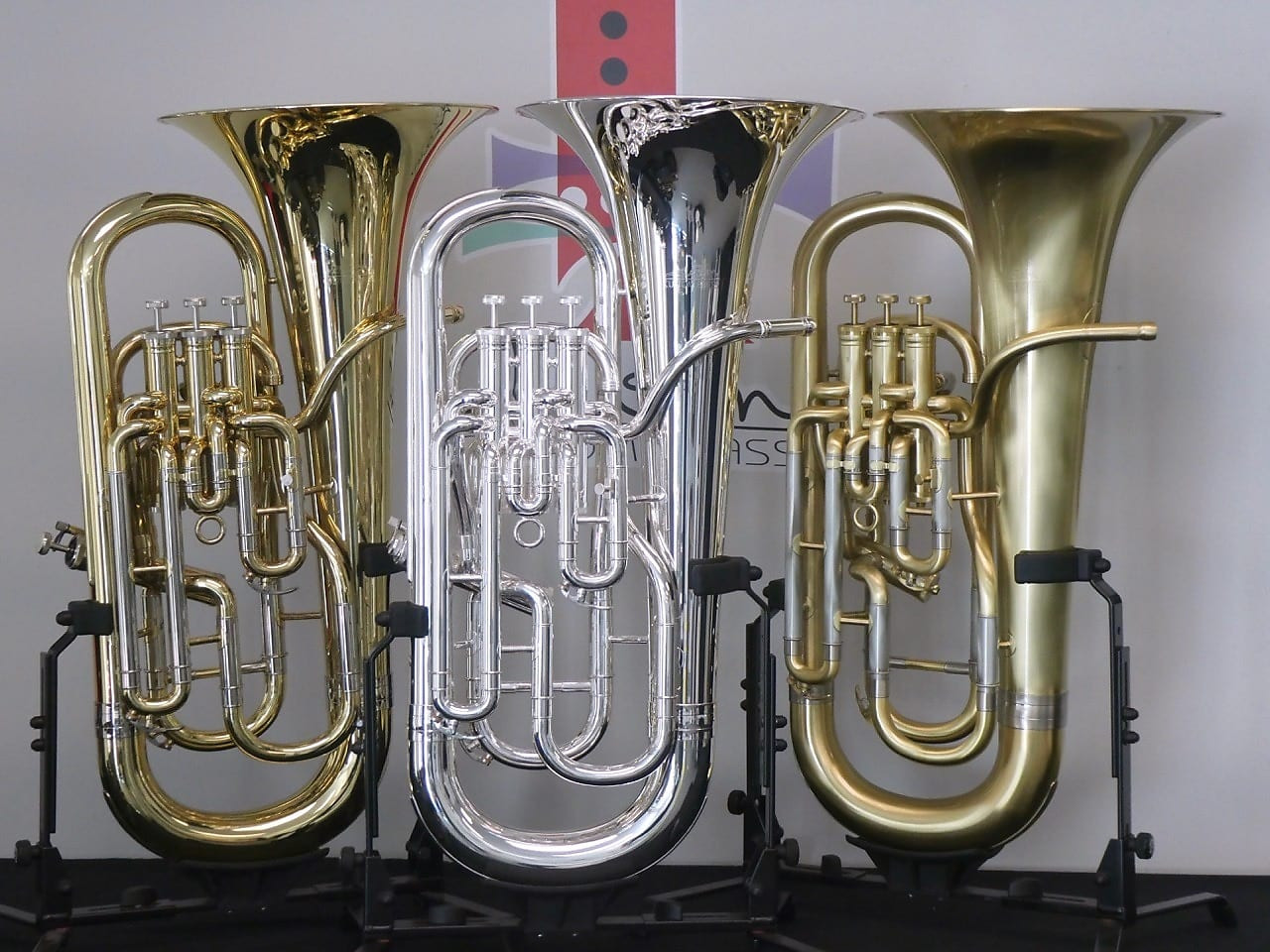

Brass Instruments
What Is A Euphonium When It Comes To Brass Instruments
Published: January 16, 2024
Discover the Euphonium, a versatile brass instrument known for its rich sound and wide range. Explore the world of brass instruments and uncover the beauty of the euphonium.
(Many of the links in this article redirect to a specific reviewed product. Your purchase of these products through affiliate links helps to generate commission for AudioLover.com, at no extra cost. Learn more)
Table of Contents
Introduction
When it comes to brass instruments, one that often stands out for its unique sound and versatility is the euphonium. The euphonium is a member of the brass family and is known for its rich, warm tone and wide range of musical capabilities. Whether you are a seasoned musician, a student learning to play a brass instrument, or simply someone interested in the world of music, understanding the euphonium can bring a new depth to your appreciation of brass instruments.
In this article, we will explore the euphonium in detail, starting with its definition and delving into its history, physical characteristics, sound, playing technique, and role in music. We will also compare the euphonium to other brass instruments and highlight some famous euphonium players who have made notable contributions to the world of music.
Whether you’re a euphonium player yourself or simply curious about this fascinating instrument, join us as we embark on a journey to discover the wonders of the euphonium.
Definition of a Euphonium
The euphonium is a large and versatile member of the brass family of instruments. It is also known as the tenor tuba or the baritone horn in some parts of the world. The term “euphonium” originates from the Greek words “eu” meaning “well” and “phone” meaning “sound,” which accurately describes the instrument’s ability to produce a beautiful and melodious tone.
A typical euphonium consists of three main components: the mouthpiece, the tubing, and the bell. The mouthpiece is similar to that of a trumpet or a trombone, allowing the player to produce sound by buzzing the lips into the cup-shaped opening. The tubing of the euphonium is coiled in a conical shape, gradually widening as it approaches the bell. This conical shape contributes to the instrument’s characteristic sound. The bell, located at the end of the euphonium, amplifies and projects the sound produced by the player.
One of the distinguishing features of the euphonium is the presence of valves. The most common type of euphonium is the three-valve model, although four-valve and even five-valve models are also available. These valves are operated by the player’s fingers and allow for changing the pitch of the instrument. By pressing down the valves in various configurations, the player can produce a wide range of notes.
The euphonium is typically played while being held in front of the musician’s body. The player supports the weight of the instrument with a strap around the neck and shoulders, while the hands manipulate the valves and the mouthpiece is positioned against the lips.
In terms of pitch, the euphonium is considered a non-transposing instrument, meaning the written music corresponds directly to the pitch produced. Its range spans from the low B-flat below the bass clef staff to around three octaves higher.
Overall, the euphonium offers a beautiful and expressive sound that is often regarded as one of the most pleasing in the brass family. Its versatility and unique tonal qualities make it a sought-after instrument in various musical genres, including classical, jazz, and brass bands.
History of the Euphonium
The origins of the euphonium can be traced back to the early 19th century. It was developed as a combination of two existing instruments: the ophicleide and the keyed bugle. The ophicleide, a predecessor of the tuba, was a large brass instrument with keys and holes for producing different pitches. On the other hand, the keyed bugle was a valveless instrument, similar to a trumpet, but with keys or valves added to extend its range.
The first true euphonium, as we recognize it today, was invented by Ferdinand Sommer of Weimar, Germany, in the 1840s. Sommer desired an instrument that would bridge the gap between the brighter sound of the trumpet and the deeper sound of the tuba. The euphonium became the perfect solution, combining elements of both instruments and providing a beautiful, mellow sound.
During the mid-19th century, the euphonium gained popularity in British military bands and brass bands. It was embraced for its rich tone and its ability to fill the tenor range, adding depth to the overall sound of these ensembles. The instrument quickly spread across Europe, with prominent composers like Hector Berlioz, Richard Wagner, and Gustav Holst incorporating it into their compositions.
In the United States, the euphonium’s prominence grew during the late 19th and early 20th centuries. It became an integral part of military bands, concert bands, and orchestras. Notable American composers such as John Philip Sousa and Percy Grainger featured the euphonium in their works, further cementing its place in the musical landscape.
Throughout the 20th century, the euphonium continued to evolve and gain recognition as a solo instrument. It was embraced by virtuoso players who showcased its full range and expressive capabilities. Today, the euphonium is widely respected as a solo instrument and is featured in orchestras, wind bands, brass bands, and chamber music ensembles.
In recent years, there has been a greater emphasis on the importance of the euphonium as an equal partner with other brass instruments. Composers are exploring new possibilities and writing more challenging and virtuosic music for the euphonium. This renewed interest and exploration have helped elevate the instrument’s standing and expand its repertoire.
As the history of the euphonium continues to unfold, it remains an instrument cherished by musicians and audiences alike for its rich sound, expressive capabilities, and significant contribution to the world of music.
Physical Characteristics of the Euphonium
The euphonium is a visually striking instrument with its distinctive shape and brass construction. Let’s explore the physical characteristics that make the euphonium unique.
The euphonium features a large, curved body made of brass. The body is typically gold or silver plated, giving it a lustrous and eye-catching appearance. It consists of three main parts: the mouthpiece, the tubing, and the bell.
The mouthpiece of the euphonium is similar in shape to that of a trumpet or a trombone. It is a small, cup-shaped metal piece that is positioned against the player’s lips. The size and shape of the mouthpiece can vary depending on the player’s preference and the desired sound. The euphonium mouthpiece plays a critical role in determining the quality of sound produced.
The tubing of the euphonium is coiled in a conical shape, gradually widening as it approaches the bell. The tubing is usually made of brass and is carefully crafted to achieve optimal resonance and projection. The length and diameter of the tubing contribute to the instrument’s characteristic sound and tonal qualities.
The euphonium bell is located at the end of the instrument. It is a large, flared opening that amplifies and projects the sound produced by the player. The shape and size of the bell can vary, with some euphoniums having a more narrow or wider flare. The bell’s design affects the instrument’s projection, response, and tonal color.
Another notable physical characteristic of the euphonium is the presence of valves. Most euphoniums come with three valves, although four and five-valve models can also be found. These valves are operated by the player’s fingers and are used to change the pitch of the instrument. As the player presses down different combinations of valves, the length of the tubing is altered, allowing for a wide range of notes to be played.
The euphonium is a relatively large instrument, measuring around 3-4 feet in length. Its weight can vary depending on the materials used and the specific model, but it is typically well-balanced for comfortable playing. To support the weight of the instrument, many euphonium players use a strap or harness that wraps around their neck and shoulders, allowing for better stability and freedom of movement.
Overall, the physical characteristics of the euphonium contribute to its unique appearance and sound. The combination of the curved body, brass construction, mouthpiece, tubing, bell, and valves all work together to create an instrument that is both visually appealing and capable of producing a rich, warm, and expressive tone.
Sound and Range of the Euphonium
The euphonium is widely renowned for its beautiful and rich sound, often described as warm, mellow, and majestic. It possesses a wide range of tonal colors, making it a versatile instrument across various musical genres and ensembles.
When played with a focused and controlled airflow, the euphonium produces a smooth and lyrical sound that is pleasing to the ear. Its conical shape and relatively large bore contribute to the instrument’s characteristic tonal qualities. The sound emerges from the bell with a warm and resonant tone that has a gentle, singing quality to it.
The range of the euphonium spans from the low B-flat below the bass clef staff to around three octaves higher. This range enables the instrument to cover the tenor and baritone registers beautifully, making it an essential voice in many musical ensembles. From the deep and rich low notes to the soaring high notes, the euphonium offers a wide pitch range for expressive and virtuosic performances.
One of the notable features of the euphonium is its ability to blend and balance with other instruments. It has a timbre that complements both brass and woodwind instruments, allowing it to fit seamlessly within various musical arrangements. In symphony orchestras, concert bands, and brass bands, the euphonium often plays an important role in providing harmonic support, adding depth to the ensemble’s sound, and occasionally taking on soloistic passages.
The sound of the euphonium can be manipulated and shaped by the player through various techniques, such as the use of vibrato, dynamics, articulation, and phrasing. This versatility allows for a range of musical expression, from delicate and intimate passages to bold and powerful statements.
In terms of dynamics, the euphonium possesses a wide dynamic range, capable of producing soft, delicate pianissimo notes, as well as strong and resounding fortissimo passages. This dynamic flexibility enables the player to convey a broad range of emotions and effectively interpret the musical intentions of the composer.
Overall, the sound and range of the euphonium make it a valuable and sought-after instrument in the world of music. Its warm, expressive, and versatile qualities allow for captivating performances in a variety of settings, making it an instrument that continues to capture the hearts of both players and listeners alike.
Playing Technique and Role in Music
The euphonium requires strong technical proficiency and a solid understanding of playing techniques for optimal performance. Mastery of these techniques enables the player to fully harness the instrument’s expressive potential and fulfill its role in various musical settings.
One key aspect of playing the euphonium is breath control. Proper breath support allows the player to sustain long phrases, create smooth legato lines, and execute dynamic changes effectively. The player must develop a strong diaphragmatic technique and learn to manage breath intake and release to maximize tone production and control.
Articulation is another important element in euphonium playing. By using the tongue to initiate and shape the attack of each note, the player can achieve clarity and precision in their playing. Different articulation techniques, such as staccato, legato, and marcato, allow for a varied and expressive musical interpretation.
The valve technique is essential for navigating the instrument’s wide pitch range. Players must develop finger dexterity and accuracy to quickly and accurately depress the valves, allowing for smooth and seamless transitions between notes. The use of proper fingerings and precise valve slides ensures an accurate intonation and clear articulation.
Playing in tune is crucial for a euphonium player. In addition to using the valves to adjust pitch, properly manipulating the lips and embouchure is crucial. The player must strive for a consistent and centered embouchure position to produce a uniform tone across all registers and ensure accurate intonation.
The role of the euphonium varies depending on the musical context. In concert bands and wind ensembles, the euphonium often serves as a bridge between the low brass and the rest of the ensemble, providing a rich harmonic foundation and adding color to the overall sound. It commonly plays melody lines, countermelodies, and occasional solo passages, showcasing its melodic capabilities.
In brass bands, the euphonium is a prominent and vital voice, often featured in virtuosic solo performances. It contributes to the harmonic texture, provides a warm and round sound in the middle range, and adds depth and character to the ensemble’s brass sound.
Euphoniums also find their place in orchestras, typically in the brass section. They contribute to the overall brass blend, support the low brass, and occasionally perform notable solo passages in orchestral works. Euphoniums are particularly prominent in British-style brass bands and are featured in competitions and concerts internationally.
Additionally, the euphonium has gained recognition as a solo instrument in its own right. Solo euphonium repertoire has flourished, showcasing the instrument’s capabilities across genres, styles, and technical demands. Euphonium players can be found performing in solo recitals, chamber music ensembles, and as featured soloists with orchestras.
The playing technique and role of the euphonium contribute to its reputation as a versatile and expressive instrument. With proper technique and musical interpretation, the euphonium brings a distinctive and captivating voice to a wide range of musical genres and settings.
Euphonium vs. Other Brass Instruments
The euphonium shares similarities with other brass instruments but also possesses unique characteristics that set it apart. Let’s explore the differences between the euphonium and some other popular brass instruments.
1. Trumpet: One of the main differences between the euphonium and the trumpet is their size and range. The trumpet is smaller and has a higher pitch range, typically playing in the soprano register. In contrast, the euphonium is larger and has a lower pitch range, covering the tenor and baritone registers. The euphonium produces a more mellow and warm sound compared to the bright and piercing sound of the trumpet.
2. Trombone: While the trombone and the euphonium are both members of the brass family, they differ in terms of their tubing and playing technique. The trombone features a slide mechanism that allows for seamless glissandos, while the euphonium uses valves to change pitch. The euphonium has a more conical shape, while the trombone has a more cylindrical bore. This results in differences in tone quality, with the euphonium having a smoother and more centered sound.
3. Tuba: The tuba and euphonium both have a similar shape and use valves to change pitch. However, the tuba is significantly larger and has a lower pitch range. Tuba parts often provide the foundation of the brass section, producing a deep and powerful sound. The euphonium, on the other hand, has a more intermediate range and is known for its versatility, playing melodic, harmonic, and supportive roles in various musical contexts.
4. French Horn: The French horn and euphonium differ in terms of their shape, sound, and playing technique. The French horn has a compact, coiled design with a flared bell, whereas the euphonium has a larger, conical shape. The French horn produces a unique and distinctive sound, known for its richness and versatility in playing both lyrical melodies and brilliant fanfares. The euphonium has a mellower and warmer sound, often providing a smooth and blended voice within ensembles.
While each brass instrument has its own distinct characteristics, they can also complement each other and be used together to create a harmonious and diverse brass sound. The range, timbre, and playing technique of the euphonium allow it to fulfill different roles and contribute to the overall musical landscape in a unique way.
Famous Euphonium Players
Throughout history, there have been numerous talented musicians who have made significant contributions to the world of music through their virtuosic euphonium playing. These players have not only showcased the capabilities of the instrument but have also helped elevate the euphonium’s standing as a solo instrument. Here are a few notable euphonium players:
1. Brian Bowman: Brian Bowman is regarded as one of the greatest euphonium players of all time. Known for his technical brilliance and expressive playing, Bowman has performed extensively as a soloist and has collaborated with renowned orchestras and ensembles. He is also a respected educator, having taught at universities and contributed to the euphonium’s pedagogical repertoire.
2. Steven Mead: Steven Mead is a prominent British euphonium soloist and clinician. Known for his virtuosic playing and passionate performances, Mead has sought to expand the euphonium’s repertoire and push its boundaries. He has premiered numerous works, commissioned new compositions, and played a key role in raising the profile of the euphonium worldwide.
3. Adam Frey: Adam Frey is an American euphonium player known for his versatility and genre-crossing performances. He has made significant contributions to both classical and contemporary music and has collaborated with renowned composers and conductors. Frey is celebrated for his technical prowess and his ability to connect with audiences through his emotive playing.
4. Charles Daellenbach: As a founding member of the renowned Canadian Brass ensemble, Charles Daellenbach has played a key role in showcasing the euphonium’s capabilities to a global audience. His innovative and imaginative approach to playing has helped elevate the euphonium’s status and expand its versatility within chamber music settings.
5. David Childs: Hailing from Wales, David Childs is a highly acclaimed euphonium player. Known for his remarkable technique and expressive performances, Childs has earned numerous accolades and awards in his career. He has premiered numerous works written specifically for the euphonium and has collaborated with orchestras and ensembles around the world.
These are just a few examples of the many accomplished euphonium players who have left their mark on the music world. Their dedication, artistry, and technical mastery have helped elevate the euphonium as a solo instrument and inspire a new generation of players. Their contributions continue to shape the instrument’s repertoire and further establish its place in the brass family.
Conclusion
The euphonium stands out as a remarkable member of the brass instrument family. With its warm, mellow sound, versatile range, and expressive capabilities, it has captured the hearts of musicians and audiences worldwide. Through its unique physical characteristics and distinct playing techniques, the euphonium offers a rich and captivating musical experience.
From its invention in the mid-19th century to its prominence in military bands, concert bands, orchestras, and brass bands, the euphonium has played a significant role in the world of music. Whether performing as a solo instrument, providing harmonic support, or displaying its virtuosic capabilities, the euphonium has proven its value and versatility in various musical genres and settings.
Notable euphonium players, such as Brian Bowman, Steven Mead, Adam Frey, Charles Daellenbach, and David Childs, have raised the instrument’s profile through their technical brilliance, expressive playing, and contributions to the euphonium’s expanding repertoire.
The euphonium’s sound, range, and playing techniques also set it apart from other brass instruments. Its melodic qualities, ability to blend and balance, and distinctive timbre make it an invaluable addition to symphony orchestras, concert bands, wind ensembles, and brass bands.
Whether you are a euphonium player, a music enthusiast, or someone curious about brass instruments, learning about the euphonium can deepen your appreciation for its unique qualities and its significant role in the world of music.
So, immerse yourself in the beauty and versatility of the euphonium, and explore the vast repertoire and expressive possibilities that this exceptional instrument has to offer.

